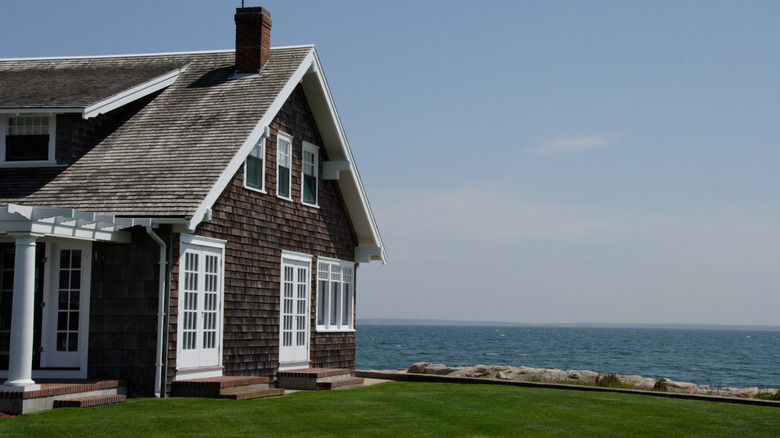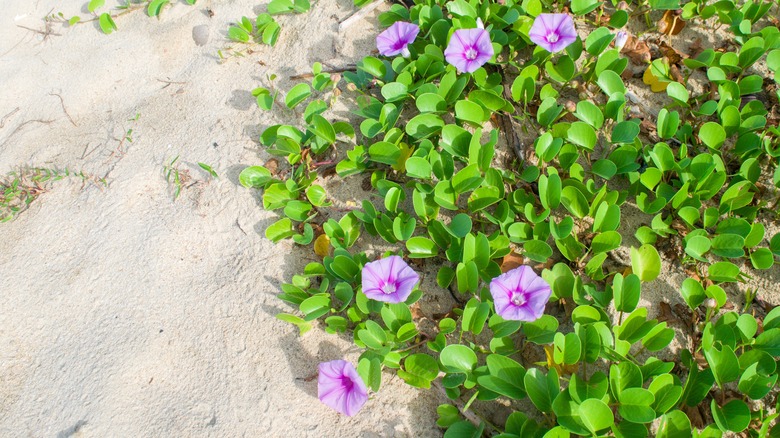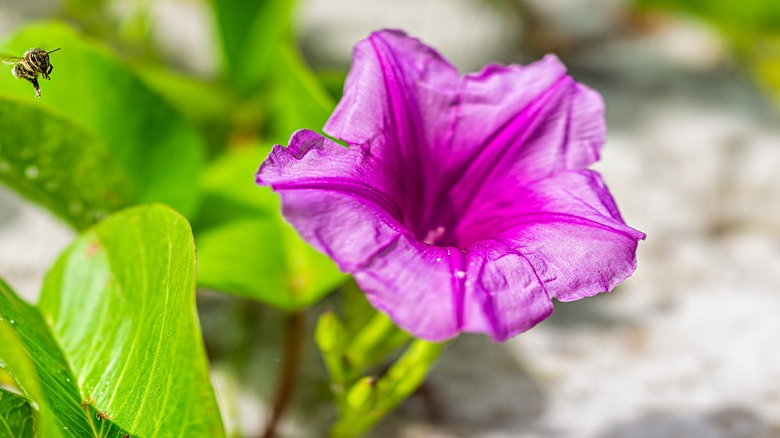Attract Bees With A Flowering Ground Cover That's Perfect For Coastal Gardens
When creating a garden, it's important to consider each of its components and how they will interact with each other. After all, for a garden to thrive it will need the right plants, proper sunlight and water, and a climate conducive to the type of plants being grown. In addition, a nice supply of pollinators is ideal. If you live on the coast, railroad vine is one of the best flowering ground covers that will easily bring more pollinators into your yard and garden.
Though you may not have heard about railroad vine, you may have heard of its family of origin, the morning glory. Railroad vine (Ipomoea pes-caprae) is also referred to as goat-foot morning glory, bayhops, or even beach morning glory which is a pretty accurate description. This vine grows fast and aggressively and can reach 30 feet in length, and though it is one of many flowering plants that thrive near the coast, it can grow well inland, too.
Coastal gardens are the ideal climate for railroad vine
Unlike inland gardens, coastal gardens can be challenging. Salt spray, harsh winds, and periods of drought can wreak havoc on many plants, but railroad vine is a good option for coastal gardens. It is surprisingly resilient and can withstand a demanding beach environment. Railroad vines have high salt tolerance so they aren't negatively affected by the coastal waters. In fact, railroad vine thrives in these conditions. It flourishes where other plants would struggle and die. However, it cannot tolerate frost and is best grown in USDA hardiness zones 9A through 12.
In addition, the railroad vine's fast-growing capability helps it become established as a dense ground cover. The grouping of roots and stems acts as a natural barrier, and is often used to help prevent soil erosion caused by wind and water. Also, the railroad vine is drought-resistant. Coastal areas get dry at times and the railroad vine has deep roots that tap into hidden water stores.
Railroad vines attract a host of pollinators
Railroad vine flowers, like many morning glories, are short-lived. The beautiful pink and purple-pink flowers typically open in the morning and wilt by the afternoon, lasting only one day. However, the good news is that railroad vines bloom abundantly throughout their flowering season, so it's possible to have new flowers opening every day. This continuous flowering, typically occurring from May to November, makes up for the flower's short lifespan and provides a reliable food source for a host of pollinators. The open structure of the flowers allows easy access to the nectar.
Railroad vine is irresistible to many pollen-seeking creatures. In addition to honeybees and bumblebees, other top pollinators like butterflies and hummingbirds also visit these flowers. Moths, wasps, and ants are also drawn to the flowers. These pollinators bring life to your garden and help to promote a healthy ecosystem, even in the often harsh coastal conditions.


